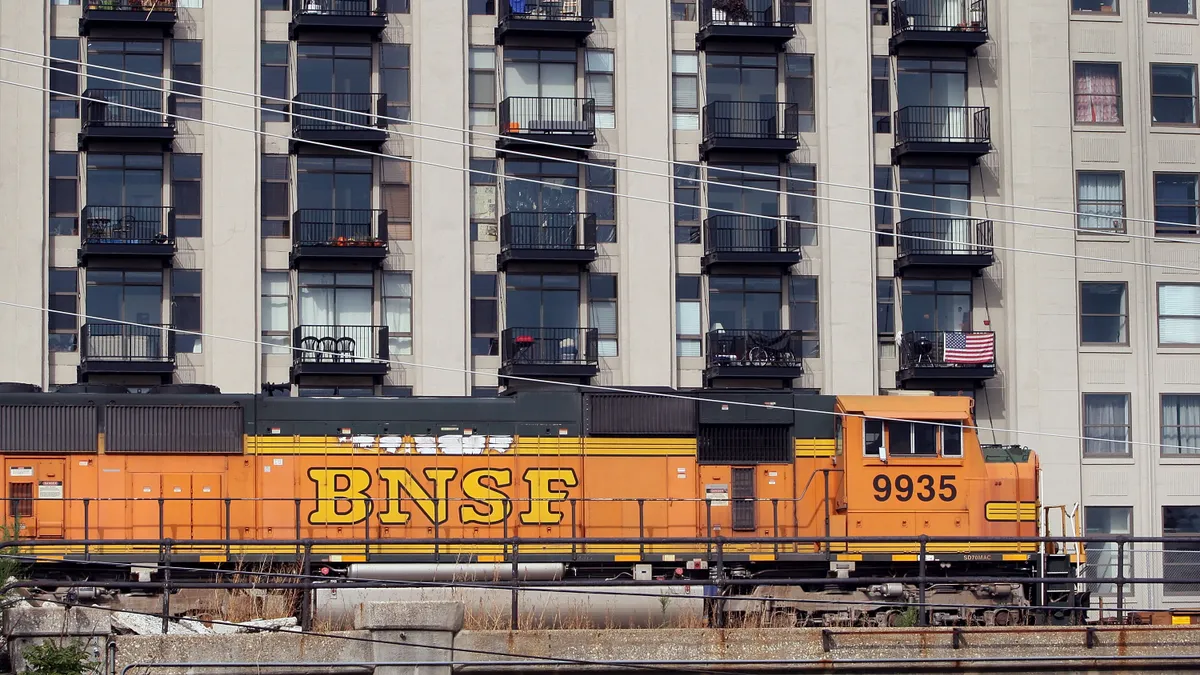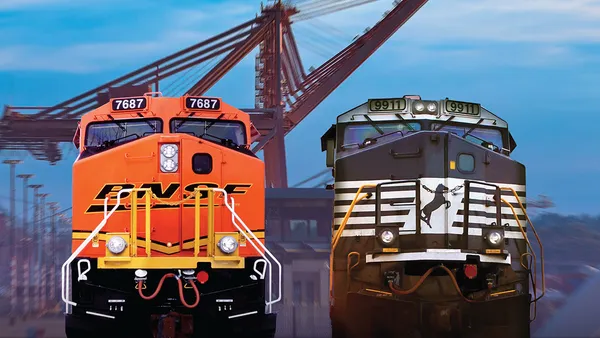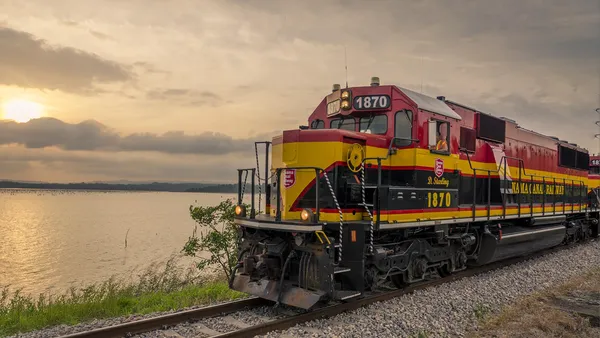Dive Brief:
- The Surface Transportation Board on Friday sent a letter to the CEOs of seven Class I railroads asking them to explain their demurrage policies amid reports of congestion and "sizeable storage fees."
- "I am particularly troubled about reports that Class I railroads are continuing to impose these charges even in circumstances when the receivers, as a practical matter, have no means to facilitate the release of their containers," STB Chairman Martin Oberman said in the letter.
- Oberman underscored the letter is not an official move to further regulate demurrage fees, but the STB will examine the railroads' policies to determine "whether any action may be warranted."
Dive Insight:
At the heart of STB's letter is a fundamental question: When are demurrage fees reasonable?
It's a question the regulator has tried to address before. In May 2020, the STB published a notice on the federal register urging shippers and carriers alike to keep several principles in mind when resolving demurrage disputes.
"Demurrage rules and charges may be unreasonable when they do not serve to incentivize the behavior of shippers and receivers to encourage the efficient use of rail assets," the notice reads.
Friday's letter to the seven Class I railroads that operate in the U.S. suggests the demurrage fees being charged as a result of recent congestion may not meet the STB's standards.
"Demurrage fails to provide any constructive incentives, and perversely results in massive charges that can exceed the commercial value of the shipment" if shippers have no reasonable means to retrieve their containers from rail facilities, Oberman wrote.
But in some cases, shippers may have market incentive to avoid picking up their container, said Joseph Schofer, a professor at Northwestern University.
"It's more than possible that the demurrage fee is less than the cost that they would have to pay to grab that," said Schofer, pointing to the existing shortage of truck drivers, chassis and the resulting spike in spot rates to hire those resources.
To put it in perspective, Schofer said one train arriving in Chicago can carry 400 intermodal containers in a single load. Moving the containers out effectively would then require 400 trucks, chassis and drivers to be available.
The Federal Maritime Commission has been dealing with a similar challenge at sea ports. As a surge in imports have arrived on the West Coast, the upswing in container volumes has caused both chassis shortages and congestion in the maritime supply chain. The regulator recently announced a permanent program to audit detention and demurrage practices among the top nine ocean carriers.
The parallels to the challenges with ocean shipping underscore that the existing railroad congestion in Chicago is not a local or industry problem, it's a supply chain one.
Eric Gehringer, executive vice president of operations at Union Pacific, turned to that message when talking to investors on the railroad's earnings call Tuesday.
"Disruptions in the international supply chains, especially in the intermodal space, have impacted our network significantly. At the expense of our own service metrics, we chose to help reduce port congestion by moving more assets into dock operations," said Gehringer. "But that West Coast port congestion has now moved east, and is affecting some of our inland terminals, most notably in Chicago."
Union Pacific and BNSF each made adjustments to their service schedules last week in an attempt to ease the congestion in Chicago. Union Pacific paused service from the West Coast to Chicago and reopened its Global III terminal as an inland storage facility. BNSF, meanwhile, announced it would "meter" its service from the West Coast to Chicago until congestion eased.
Congestion is not limited to Chicago, though. The Greater Memphis Chamber sent a letter to the STB in April 2021, requesting assistance to resolve an "inland rail crisis" that was affecting importers and exporters alike. The Association of American Railroads filed a response to the STB, noting "railroads are one piece of a global supply chain that is facing unprecedented challenges."
"America has an integrated freight network where events in one mode can – and do – impact others," said Jessica Kahanek, AAR's director of media relations, in an email. "No single factor created the slowdowns and fragmentation that businesses and consumers are currently facing in certain parts of the supply chain, and no single solution will fix it."
"The freight rail industry remains committed to working with our partners at the ports and in the trucking sector to restore the highest level of reliability and efficiency throughout the freight logistics chain," said Kahanek.














